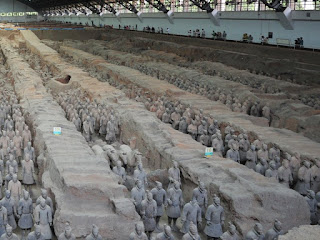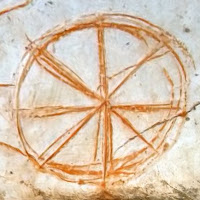 In the west, evidence is building that Jesus is moving small, organic groups and the more established church organisations to engage with one another in mutually helpful ways.
In the west, evidence is building that Jesus is moving small, organic groups and the more established church organisations to engage with one another in mutually helpful ways.It has been all too easy to see the small and the large as somehow on opposite 'sides'. But they are not. Cooperation is both possible and essential. We should seek and embrace it.
I was prompted to write about this after a brief conversation with Donna and our friend Ash, and a comment on Neil Cole's blog this morning.
A conversation - Donna was talking about a series of meetings at the Kings Arms in Bedford (The 'Heaven Touches Earth' Conference), and was thinking she might book to attend some of the sessions. Ash expressed some interest too, but I was less enthusiastic. Then the conversation moved on to the need for structure and organisation for managing larger sizes of church or meetings like those in Bedford. On the other hand, really small groups can meet with little or no planning, just listening and responding to the Holy Spirit in the moment.
A blog article and a comment - In September 2011, Neil Cole posted an article about his forthcoming book, 'Church Transfusion'. Here's his first paragraph.
My newest project is called Church Transfusion: Releasing Organic Life into Established Churches. We are offering a two day training, much like our Greenhouse, for those who lead an established church but would like to see more vital health and reproduction from organic church principles. There will also be a book forthcoming, published by Jossey-Bass in the Leadership Network series written by myself and Phil Helfer.
On 22nd May 2012 Kathleen wrote a comment.
I'm really excited to find a reference to your new book, "Church Transfusion", coming out later this year. I am currently writing a similar book, called "Church in a Circle." Of course, I don't know if they are similar at all - but my husband and I are passionate about seeing elements of organic church move into the established church, and change it from within.
Why does this excite me? - It's exciting because this is so much what Father has been showing me recently. I kicked over the traces of 'big church' back in the late 1970s. I wasn't always wise or careful in the way I went about it. For much of my life I was in or out of small meetings, but always wishing to be in. Sometimes there was no opportunity.
In 1998 I joined Open Door Church here in St Neots where we live. I joined because I thought it was a good idea, not because Father led me to do so. That was a mistake and a few years later I had to ask to be released (which the leaders graciously did).
Today I am glad to be part of Donna's Small Group, itself a part of Open Door. But I am not officially a member of the church and I'm still much involved with others following Jesus in the area where we live.
Here are some other articles from my blog that relate to this.
- Church as network - a series on the importance of networking
- What is the greatest priority? - being one body
- Coventry Cathedral - a prophetic series on the relationship and value of old and new
- Praying for Britain - praying together, across the divisions
- Circles of friends - support and community from a wide base
- Mega/micro co-operation - helping one another
- Tribes and leadership - some thoughts from House2House
Some of those links cover several articles. Even so, it's not an exhaustive list and you will find many older articles here on related themes, oneness in the body has long been a central hunger in my heart.
Let me share a heart-warming story from the House2House conference in 2009. Just before the conference was to start, the person responsible for the audio and video equipment was called away for the unexpectedly premature birth of his child. How was the gap to be filled?
A local megachurch heard about the problem and sent their audio-visual unit with all the necessary equipment and the people to operate it, all at no cost to House2House. This is love at work. This is cooperation at its finest. The small has good things to offer the large - and vice versa.
Loving one another - In the end, it all boils down to love. The Father loves the Son and the Son loves the Father. We are drawn into their love and become part of their community. We are the body of Christ!
Therefore it follows (and Jesus commands) that we love the Father, we love one another, we love the lost and those who suffer and struggle, and we even love our enemies.
So reach out across the divide in your own town or city. You may have much to offer to your brothers and sisters who are doing things differently.


















